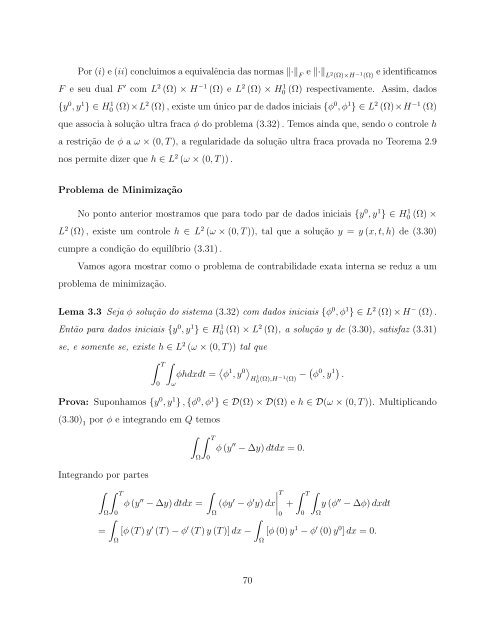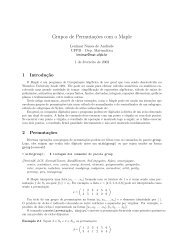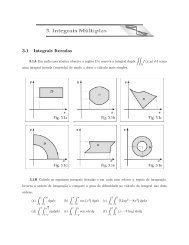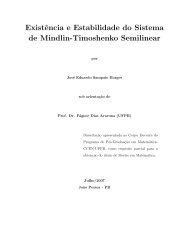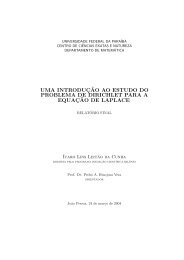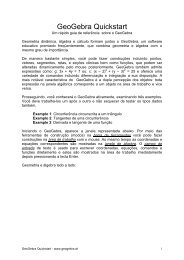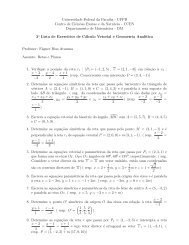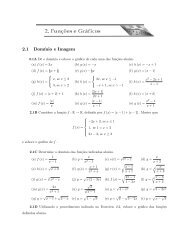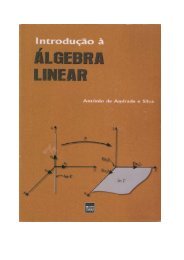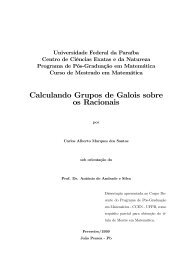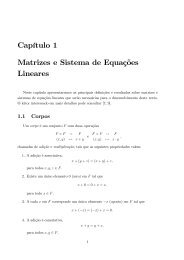Controlabilidade Exata e Aproximada da Equação da Onda Linear
Controlabilidade Exata e Aproximada da Equação da Onda Linear
Controlabilidade Exata e Aproximada da Equação da Onda Linear
You also want an ePaper? Increase the reach of your titles
YUMPU automatically turns print PDFs into web optimized ePapers that Google loves.
Por (i) e (ii) concluimos a equivalência <strong>da</strong>s normas · F e · L 2 (Ω)×H −1 (Ω) e identificamos<br />
F e seu dual F ′ com L 2 (Ω) × H −1 (Ω) e L 2 (Ω) × H 1 0 (Ω) respectivamente. Assim, <strong>da</strong>dos<br />
{y 0 , y 1 } ∈ H 1 0 (Ω)×L 2 (Ω) , existe um único par de <strong>da</strong>dos iniciais {φ 0 , φ 1 } ∈ L 2 (Ω)×H −1 (Ω)<br />
que associa à solução ultra fraca φ do problema (3.32) . Temos ain<strong>da</strong> que, sendo o controle h<br />
a restrição de φ a ω × (0, T ), a regulari<strong>da</strong>de <strong>da</strong> solução ultra fraca prova<strong>da</strong> no Teorema 2.9<br />
nos permite dizer que h ∈ L 2 (ω × (0, T )) .<br />
Problema de Minimização<br />
No ponto anterior mostramos que para todo par de <strong>da</strong>dos iniciais {y 0 , y 1 } ∈ H 1 0 (Ω) ×<br />
L 2 (Ω) , existe um controle h ∈ L 2 (ω × (0, T )), tal que a solução y = y (x, t, h) de (3.30)<br />
cumpre a condição do equilíbrio (3.31) .<br />
Vamos agora mostrar como o problema de contrabili<strong>da</strong>de exata interna se reduz a um<br />
problema de minimização.<br />
Lema 3.3 Seja φ solução do sistema (3.32) com <strong>da</strong>dos iniciais {φ 0 , φ 1 } ∈ L 2 (Ω) × H − (Ω) .<br />
Então para <strong>da</strong>dos iniciais {y 0 , y 1 } ∈ H 1 0 (Ω) × L 2 (Ω), a solução y de (3.30), satisfaz (3.31)<br />
se, e somente se, existe h ∈ L 2 (ω × (0, T )) tal que<br />
T <br />
0<br />
ω<br />
φhdxdt = φ 1 , y 0<br />
H 1 0 (Ω),H−1 (Ω) − φ 0 , y 1 .<br />
Prova: Suponhamos {y 0 , y 1 } , {φ 0 , φ 1 } ∈ D(Ω) × D(Ω) e h ∈ D(ω × (0, T )). Multiplicando<br />
(3.30) 1 por φ e integrando em Q temos<br />
Integrando por partes<br />
<br />
T<br />
φ (y ′′ <br />
− ∆y) dtdx =<br />
Ω<br />
<br />
=<br />
0<br />
<br />
Ω<br />
T<br />
φ (y ′′ − ∆y) dtdx = 0.<br />
0<br />
<br />
<br />
(φy<br />
Ω<br />
′ − φ ′ T<br />
y) dx<br />
<br />
0<br />
[φ (T ) y<br />
Ω<br />
′ (T ) − φ ′ (T ) y (T )] dx −<br />
70<br />
<br />
T <br />
+<br />
0<br />
Ω<br />
y (φ ′′ − ∆φ) dxdt<br />
[φ (0) y<br />
Ω<br />
1 − φ ′ (0) y0 ] dx = 0.


